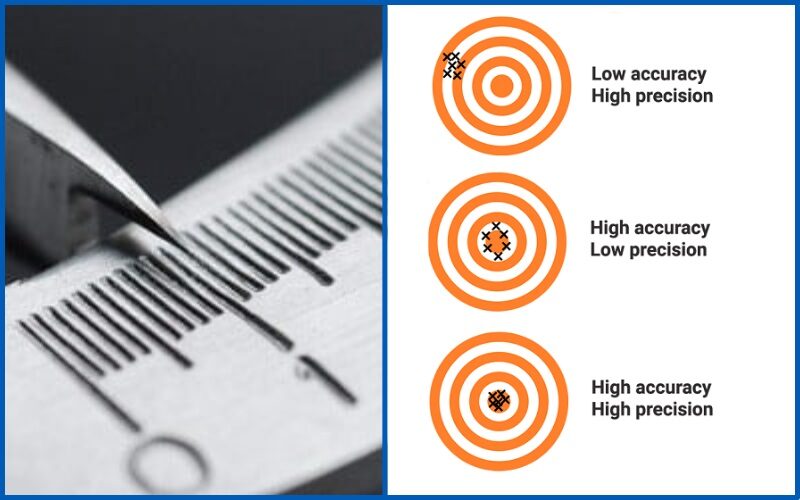The difference between Calibration and Adjustment, Accuracy and Precision
Last update
The difference between Calibration and Adjustment
Calibration and adjustment are two similar processes that are often confused and wrongly used interchangeably. This article aims to clear up the differences.
The difference between Calibration and Adjustment
The National Physics Laboratory clearly explains the key differences between
CALIBRATION and ADJUSTMENT:
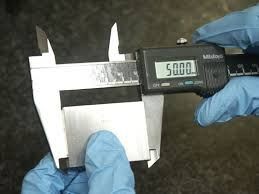
- Calibration: is defined as a set of operations that establish, under specified conditions, the relationship between the values of quantities indicated by a measuring instrument or measuring system and the corresponding values realised by standards.Sometimes, however, the word calibration is misused to describe the process of altering the performance of an instrument to ensure that the values it indicates are correct within specified limits (e.g. adjusting an instrument until its reading agrees with that of another instrument). Strictly speaking this is adjustment.
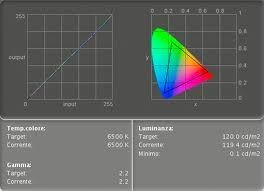
- Adjustment: is defined as the operation of bringing a measuring instrument into a state of performance suitable for its use. This is not calibration. Although the nature and magnitude of the adjustment is often determined by a pre-adjustment calibration, sometimes known as a first calibration.
The procedure is:
- first calibration (to determine the approximate magnitude of the necessary adjustment)
- adjustment
- second calibration.
You can learn about our pyranometer calibration here.
An indepth article can be found on asq.
Metrologically speaking, the International Vocabulary of Metrology, V.I.M ed.3, gives the exact definition of these terms.
The difference between Accuracy and Precision
Accuracy and precision are often considered synonyms. Today, with the development of high tech equipment and measuring devices, metrology has differentiated the two.
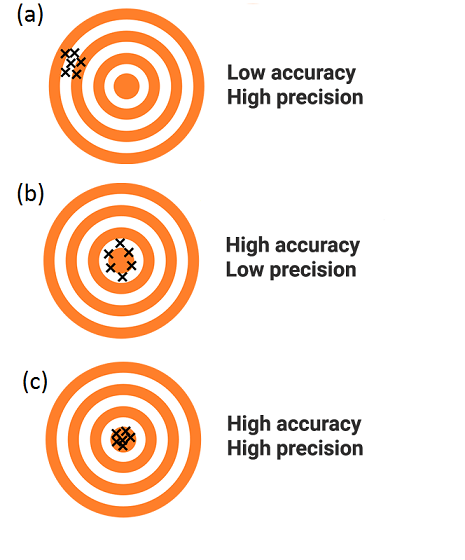
- Accuracy: indicates how a given measurement is close to the real value.
- Precision: refers to the closeness between independent measurements.
To understand the difference between accuracy and precision consider the targets in the right image. The precise measurements are represented by many arrows stuck in the same area near the center (Fig.a). The accurate measurements are represented by the arrows stuck near the center in a scattered way (see the concept of measurement “dispersion”) (Fig.b).
The accurate and precise measurements are represented by the arrows stuck close together in the middle of the target (Fig.c).
Now we are going to highlight the importance of accuracy and precision of solar irradiance sensors.
The accuracy and precision in solar irradiation measuring devices
Physicists and those involved in solar energy business know that the Sun irradiates the Earth’s surface with a broad spectrum of rays, from ultraviolet to far infrared.
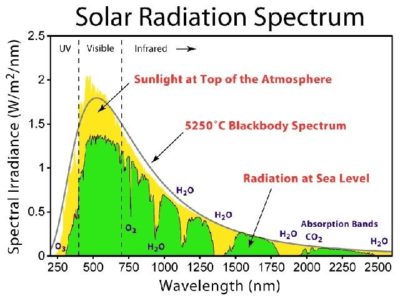
The pyranometer is the instrument that measures with the highest accuracy the amount of energy penetrated within Earth’s atmosphere. It can measure from 250nm to 2400nm (some go up to 2800nm). When the pyranometer has a good quality, we have also a precise tool.
That is however a relative concept.
In fact meteorology looks for the energy generated from the entire solar spectrum and received at a given place of the earth’s surface, while silicon photovoltaic cells don’t need the broad spectrum. Photovoltaic cells are able to convert only part of the solar spectrum into electric energy: this part goes from 330nm to 1100nm.
![]()

The left figure represents the only portion of the spectrum convertible into electricity by a silicon cell.
The right figure shows how the pyranometer measures the entire solar spectrum; this is obviously not an accurate value of the amount of solar energy effectively convertible into electrical energy.
Trial measurements ( at Lat.45 -46 ° N) made with a “secondary standard” pyranometer and silicon cell irradiance sensor have demonstrated that the solar spectrum actually read is effectively narrower compared to the one represented in the figure above. In fact, except for sunrise and sunset, the values given by the two instruments didn’t differ much.
From our frequent observations we can nonetheless affirm that the irradiance sensor is the most accurate instrument for measuring the amount of solar energy convertible into photovoltaic energy.
The irradiance sensor is the reference tool for measuring the amount of energy that can be produced by a photovoltaic system.
Making a parallel with the concept of benchmark existing in the financial world, we can say that a irradiance senso is the proper benchmark for the investment fund called photovoltaic system.

